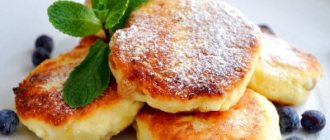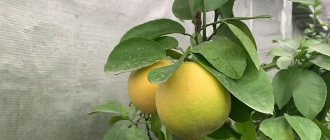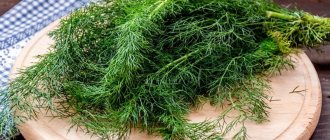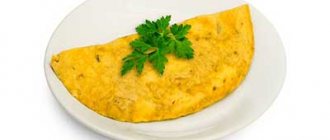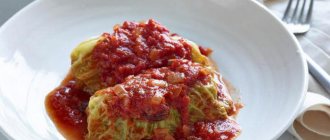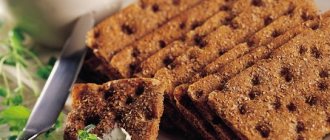Coconut: benefits and harm are two qualities that are inherent in the drupes of a tropical plant, because consuming excessively large quantities of any delicacy can lead to its rejection by the body. The fruit of the coconut palm belongs to the category of goods called “nuts” only conditionally, because scientists say that it is a drupe, which is closer to a cherry or apricot. Regular consumption promotes improved functioning of the thyroid, digestive, and cardiovascular systems, and reduces the risk of developing cancer. Despite its high calorie content, the product is recommended for use as part of dietary nutrition systems: accelerated metabolism leads to weight loss. Detailed information about the beneficial properties of coconut is presented in the text below.
coconut tree
What it is
Coconuts are the fruits of palm trees that grow in tropical climates:
- Philippines;
- Malay Archipelago;
- Malay Peninsula;
- Indian Peninsula;
- Sri Lanka.
The birthplace of the culture is Malaysia, the leading export countries are Indonesia and Thailand.
Description:
- palm trees up to thirty meters high;
- trunk diameter ranges from 15 to 45 centimeters;
- trunk texture – smooth;
- lateral branches are absent;
- in the lower part the trunk is surrounded by supporting roots;
- green leaves;
- leaf shape – pinnately dissected;
- number of sheets – no more than thirty;
- the color of the flowers is light yellow;
- the flowers are not divided into male and female, they are arranged in spikes, the spikes are panicles;
- fruits are round drupes, brown in color;
- the size of the fruits ranges from fifteen to thirty centimeters;
- fibrous surface;
- there are three pores in the inner shell;
- out of three ovules, only one becomes a seed;
- components of the seed – pulp + endosperm;
- The color of the endosperm is initially transparent, but by the time of ripening it acquires a light yellow tint - the oil component of the pulp partially passes into the liquid part.
There is a common misconception that coconut is a nut, since its close relatives are cherry or apricot.
What do coconuts look like and where do they grow?
Coconut is a round, slightly elongated fruit of the coconut palm. Its length reaches 25 - 30 cm, and its weight is 2.5 kg. People tend to think of coconut as a nut, which is considered a mistake. This is a drupe, the inner part of which is called the endocarp, and the outer part is called the exocarp. The pulp located inside is 12 mm thick and contains liquid containing nutrients, starch and proteins. This water is called edosperm. As soon as the exotic begins to ripen, it is transparent and a little cloudy. In ripe fruit, the water acquires a yellowish tint and is saturated with oils. Mixing with the pulp, the water turns into coconut milk, which has a sweetish taste.
We recommend reading: The benefits and harms of coconut milk for the body
The best soil for coconut palm growth is sandy soil. The wild variety prefers the tropics. Palm trees grow in large numbers along the coastal strip of the Malay Peninsula, Sri Lanka. The habitats of these trees include the Indian coasts and the Philippines. And in Indonesia, the processing and production of coconuts is the most developed, in which it ranks first.
Coconut: chemical composition
The fruit of a palm tree growing in a tropical climate, coconut, benefits and harm to the body, the calorie content of which is interconnected and differs from other nuts in its lower calorie content - almost twice the average value - 500-600 kilocalories. The energy value of one hundred grams of the product is 354.0 kilocalories. The high value of this parameter fully determines the need to control the daily amount of drupe pulp or milk consumed and its undesirable use by obese people.
It is worth noting that the data for fresh pulp is presented below: calorie content, amount of proteins, fats, carbohydrates for dried fruits, milk, oil and other modifications are different, which must be taken into account when calculating.
Types of Coconut Products
The raw white flesh inside the coconut is called the kernel. It has a firm texture and a pleasant, slightly sweet taste (2).
If you have a whole coconut, you can remove the raw meat from the shell and eat it. In its processed form, you can usually find it chopped, grated, or as flour (2, 3).
Coconut milk and cream are prepared by squeezing the raw, grated flesh (2, 3).
Dried coconut meat is usually ground and used in cooking or baking. It can also be processed and ground into flour (2, 3).
Coconut oil is also extracted from the pulp (2, 3, 4).
Summary:
Coconut meat has a pleasant, slightly sweet flavor and you can enjoy it raw or dried. It produces many related products, including coconut milk, cream and butter.
Benefits of coconut
Despite the fact that the palm tree does not grow in our country, drupes and other modifications can be found everywhere on the shelves of retail chains. Often the shavings are a component of desserts, sweet pastries, cakes and other products, and the oil is included in most cosmetic products. A unique ratio of amino acids, the presence of polyunsaturated fatty acids in the complex:
- imparts moisturizing properties;
- accelerates cellular regeneration;
- does not clog pores;
- eliminates imperfections of the epidermis.
It is known that the benefits of coconut milk are similar to the pulp of the fruit, since the product is a mixture of crushed soft part with water. The new physical state expands the range of applications: you can drink it, add it to dishes, use it as a facial toner, thereby nourishing the body from the inside and out. Below is detailed information about the characteristics of water, oil, shavings, and dried fruits.
Benefits of coconut products
To experience the benefits of coconut, you don’t have to include only its pulp in your diet. There are other forms that also have a beneficial effect on the body.
Coconut oil
It is considered one of the healthiest and safest products for cooking. When it comes to chemical composition, it becomes clear that coconut oil is superior in its benefits to olive oil. Unlike other types of cooking fats, this product does not form polymerized lipids or dangerous trans fats that increase cholesterol levels in the body.
Coconut oil is rich in antioxidants, which help improve overall health. This substance is able to cleanse the body of toxins, and as a cosmetic product it perfectly moisturizes the skin, slows down its aging, and keeps it smooth and healthy for a long time.
In addition, this product is useful in protecting teeth from bacteria that cause tooth decay and other diseases. And if you apply it to your gums, it will help prevent bleeding and strengthen your teeth.
Another benefit of coconut oil is that it promotes weight loss. This product, rich in unsaturated fats, regulates the thyroid gland and speeds up metabolism. It is these two factors that determine the reputation of coconut oil as an anti-obesity agent [6].
Coconut water
Another amazing ability of coconuts is to purify water. These fruits are delicious natural filters. It takes the nut almost nine months to purify a liter of water contained in its shell. The result is a crystal clear and sterile liquid, which, as it turns out, can even be infused into human blood vessels.
In addition, coconut water contains the highest concentration of electrolytes known in nature. As a result, this substance is ideal for hydration.
Coconut cream
This product, which is made from nut pulp, resembles milk, but is thicker in consistency. Cosmetologists claim that this is the best skin care product. Unlike traditional creams, which actually force fat molecules into the skin, coconut oil cream moisturizes the cream and activates the production of its own secretion.
Other benefits of coconut products for the body:
- The fruit pulp contains lauric acid, a substance necessary to increase the level of so-called good cholesterol. High-density lipoproteins are needed to maintain healthy coronary arteries and also prevent atherosclerosis.
- Coconut water, in addition to many vitamins and minerals, contains enzymes (phosphatase, catalase, dehydrogenase, peroxidase, polymerase and others) that promote proper digestion.
- Coconut water contains unique substances - cytokines, which, as studies have shown, slow down aging [7], remove carcinogens from the body and prevent the formation of clots in blood vessels.
- Coconut meat is rich in fiber. And this fact makes the fruit useful for intestinal function, preventing hyperglycemia, lowering blood pressure, ensuring satiety, and also strengthening the immune system.
- The raw nut contains monolaurin and at least three fatty acids (caprylic, capric, lauric), which have antiviral and antibacterial properties. Additionally, fatty acids help control yeast levels, preventing candida.
- Coconut oil is beneficial for treating and preventing acne. Lauric acid, entering the sebaceous glands, cleanses them of bacteria, thus preventing inflammation.
- Coconut oil will also help restore shine to damaged and weakened hair. This product moisturizes hair and supplies it with additional proteins. In addition, it is known that due to its specific formula, coconut oil penetrates hair cells more easily than other plant products.
- Caprylic acid contained in coconut oil helps with Alzheimer's disease [8].
- Children with pneumonia who eat coconut oil recover easier and faster, and their fever decreases and their breathing becomes easier.
Urbech from coconut: benefits and harms, how to take
This is the name of a traditional dish of Caucasian cuisine, which was previously made based on nuts. The manufacturing principle is slow grinding, as a result of which the product acquires a paste-like structure. The energy value of one hundred grams of pasta is 354.0 kilocalories: changes in appearance do not affect the calorie content.
The treat can be:
- purchase ready-made;
- cook it yourself.
If we talk about benefits, then all the positive characteristics of the original raw materials are preserved: there is no heat treatment during production. You can eat it in its pure form or add it to other dishes, not forgetting its high energy value.
Coconut: benefits and harm to the body
The positive and negative aspects of the product are often attributed to the pulp of the fruit, but you should still distinguish between butter and milk. The first is 99.0% fat, suitable for internal and external use, the second has a lower calorie content and can also be used internally due to its pronounced anthelmintic effect and externally, replacing a day/evening facial toner. These properties are useful for women, but what value do the fruits of a tropical plant have for other categories of people? The answer to this question is presented in the text below.
Benefits of coconut for women
The pronounced anti-cancer effect is especially relevant for women, because regular use of the product reduces the risk of diagnosing breast cancer and other oncological diseases. Do not forget that the pulp contains a set of necessary substances for the healthy appearance of hair, nail plates, and epidermis.
The oil has specific benefits:
- application on the face eliminates imperfections due to the regulating effect on the skin - the amount of sebum produced by the skin glands is reduced;
- You can solve problems with lack of shine, dullness, fragility, and split hair shafts.
Milk can be used as:
- daily tonic;
- means for removing decorative cosmetics.
Vitamins and minerals
The chemical composition of coconut is quite rich and varied. Vitamins are presented in the following list:
- Vitamin K is important for blood clotting and ensures proper functioning of the liver and intestines;
- Vitamin C is one of the powerful antioxidants. It has a beneficial effect on the body, participates in metabolic processes, the synthesis of biologically important substances and hormones, neutralizes the effects of free radicals, and activates the immune system;
- Vitamin E is also a strong antioxidant. Protects cell membranes from destruction, prevents the fixation of atherosclerotic plaques on the walls of blood vessels, and fights free radicals.
- B vitamins are actively involved in the functioning of nerve cells. They synthesize protein, regulate metabolic processes, and improve mood. Improves skin condition, making it more elastic. Strengthens vision. Stimulate blood circulation. They cleanse the body of waste and toxins and normalize digestion.
Coconut fruits contain a large number of macro and microelements, without which all important biological processes cannot occur, such as calcium, potassium, iron, selenium, copper, sodium, phosphorus, magnesium, manganese, zinc and iodine.
Coconut: contraindications, harm
It is worth knowing that the product contains a high content of selenium, which can accumulate in the body, disrupting the functioning of internal organs. Daily consumption of more than 200 grams (300 for men) can provoke poisoning and, as a result, vomiting, nausea, dizziness, and migraines.
Contraindications for use are:
- ulcers, gastritis during periods of exacerbation;
- individual intolerance;
- children less than three years old
- excess weight (obesity).
Coconut
Do you know that:
A job that a person doesn’t like is much more harmful to his psyche than no job at all.
74-year-old Australian resident James Harrison has donated blood about 1,000 times. He has a rare blood type whose antibodies help newborns with severe anemia survive. Thus, the Australian saved about two million children.
The rarest disease is Kuru disease. Only members of the For tribe in New Guinea suffer from it. The patient dies of laughter. The disease is believed to be caused by eating human brains.
According to statistics, on Mondays the risk of back injuries increases by 25%, and the risk of a heart attack by 33%. Be careful.
An educated person is less susceptible to brain diseases. Intellectual activity promotes the formation of additional tissue that compensates for the disease.
Human bones are four times stronger than concrete.
In 5% of patients, the antidepressant Clomipramine causes orgasm.
Each person has not only unique fingerprints, but also tongue prints.
American scientists conducted experiments on mice and came to the conclusion that watermelon juice prevents the development of vascular atherosclerosis. One group of mice drank plain water, and the second group drank watermelon juice. As a result, the vessels of the second group were free of cholesterol plaques.
The human brain weighs about 2% of the total body weight, but it consumes about 20% of the oxygen entering the blood. This fact makes the human brain extremely susceptible to damage caused by a lack of oxygen.
In an effort to get the patient out, doctors often go too far. For example, a certain Charles Jensen in the period from 1954 to 1994. survived more than 900 operations to remove tumors.
The human stomach copes well with foreign objects without medical intervention. It is known that gastric juice can even dissolve coins.
When lovers kiss, each of them loses 6.4 calories per minute, but at the same time they exchange almost 300 types of different bacteria.
A person taking antidepressants will, in most cases, become depressed again. If a person has coped with depression on his own, he has every chance to forget about this condition forever.
The first vibrator was invented in the 19th century. It was powered by a steam engine and was intended to treat female hysteria.
Coconut: rules for selection and storage
To choose a juicy, ripe fruit, it is worth considering:
- the coconut should be heavier than it looks;
- with a uniform surface, without darkening;
- when shaken, you can hear the water splashing inside;
- There are three points on the sharp side, none of them should be soft or moldy.
The presence of an unpleasant odor, soft or damp places causes refusal. Expiration dates:
- opened fruit - refrigerator, no more than two days;
- milk: refrigerator – up to 7 days; freezer – up to 60 days;
- shavings - dry, out of direct sunlight, ventilated place - up to 12 months.
Do not forget that stale fruits may contain molds that are deadly to humans, called aflatoxins, so you should not eat a product that does not look right or has been stored for too long.
Beneficial features
The people of ancient India knew about the health benefits of coconuts. They used the plant as an antibacterial, antiviral, antifungal and immune-boosting agent. But humanity discovered a more complete list of the advantages of this fruit relatively recently - when researchers began to study its chemical composition and effect on the body’s cells.
One of the coconut's most amazing powers was discovered during World War II. In the Pacific region, doctors, faced with a shortage of blood plasma, used pure coconut water from young nuts instead of the necessary substance to save the lives of soldiers. It turned out that its composition is almost identical to the chemical formula of human blood [3]. Moreover, coconut liquid is ideal for people with any blood type.
Due to their unique properties, coconuts can be useful in the following cases [4][5]:
- strengthening the immune system;
- supplying the body with energy and increasing physical endurance;
- cholesterol regulation;
- improved digestion;
- stabilization of glucose levels;
- activation of insulin production;
- fight against cancer;
- restoration of proper functioning of the thyroid gland;
- prevention of bladder and kidney diseases;
- fight against viruses;
- regulation of hormonal levels;
- weight loss;
- improvement of metabolism;
- getting rid of bacteria;
- infection control;
- memory improvement;
- protection of hair and skin from ultraviolet radiation and early aging.
Coconut: as much as possible per day
High calorie content indicates the need to control the amount consumed daily, so you should stick to the following amounts:
| Floor | Grams |
| Men | 300 |
| Women | 200 |
| Children three years old | 50 |
| Children of ten years old | 100 |
These standards will not lead to excess weight gain or accumulation of minerals in the body.
Brief summary
- According to the data presented above, we can conclude that the benefits of coconut are undeniable for external and internal use, and the high calorie content of the product requires control of the amount consumed.
- It is worth distinguishing between juice, milk, butter, dried fruits, and milk powder - these are modifications obtained from fresh pulp.
- Coconut juice and milk are often mistakenly identified - the former can be extracted by cutting the drupe, the latter is a by-product of preparing the oil.
- A powerful tool for preserving the youth of the epidermis and the health of the hair shafts is coconut oil, which can act as a component of a home or purchased product.
- The product, compared to animal milk, has no cholesterol, so butter has a lower risk of developing mutations in subsequent generations compared to butter, so it can be used for frying.
- The list of contraindications includes individual intolerance, children under three years of age, ulcers and gastritis during periods of exacerbation. Pregnant women should use with the permission of a doctor.
Nutritional value and composition
It's hard to believe, but not so long ago coconut had a pretty bad reputation. These nuts were thought to clog arteries, raise cholesterol, and promote heart disease.
Today, however, humanity already knows that these wonderful fruits are extremely nutritious, rich in fiber, essential vitamins and minerals.
Coconut water is a natural source of electrolytes, which are necessary for proper hydration of muscles and nerve cells. The liquid in coconuts contains almost no calories, carbohydrates and fats, but it is rich in B vitamins, ascorbic acid and proteins. But the fruit crumb, on the contrary, is an exceptional source of healthy fats, and also contains many minerals, vitamins and amino acids.
Coconut oil is a source of natural lipids, including saturated ones with a medium chain length, and these substances are useful for improving metabolism and losing excess weight.
Nutritional value per 100 g [2]
| Calorie content | 354 kcal |
| Squirrels | 3.3 g |
| Fats | 33.5 g |
| Carbohydrates | 6.23 g |
| Vitamin C | 3.3 mg |
| Vitamin E | 0.24 mg |
| Vitamin K | 0.2 mcg |
| Thiamine | 0.066 mg |
| Niacin | 0.54 mg |
| Pantothenic acid | 0.3 mg |
| Pyridoxine | 0.054 mg |
| Folic acid | 26 mcg |
| Kholin | 12.1 mg |
| Calcium | 14 mg |
| Iron | 2.43 mg |
| Magnesium | 32 mg |
| Phosphorus | 113 mg |
| Potassium | 356 mg |
| Sodium | 20 mg |
| Zinc | 1.1 mg |
| Copper | 0.43 mg |
| Manganese | 1.5 mg |
| Selenium | 10.1 mcg |
| Water | 47 g |
| Ash | 0.97 g |

